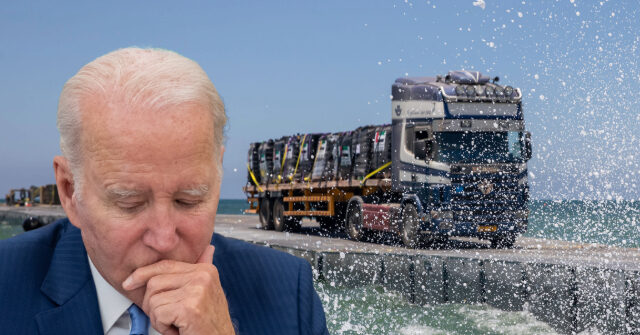U.S. Army Sgt. Quandarius Davon Stanley, a 23-year-old military service member, tragically passed away due to injuries incurred while working on a floating pier established by the Biden-Harris administration for delivering humanitarian aid to Palestinians in Gaza. The pier, which was touted as a significant commitment during President Joe Biden’s State of the Union address, underscored the administration’s efforts to address the humanitarian crisis surrounding the ongoing conflict. Despite Biden’s assurances of no “boots on the ground” involvement, the complexities of the operation meant that U.S. personnel were still engaged at sea and exposed to potential danger. The construction of the pier came at a cost of $230 million, reflecting both the financial and strategic investments made for this humanitarian initiative.
Reports indicate that the pier faced numerous challenges during its operation, particularly stemming from adverse weather conditions such as storms and high waves in the Mediterranean, which resulted in the structure frequently breaking apart. Sources, including Breitbart News, highlighted the inherent risks to U.S. personnel tasked with operating the pier. Exclusive footage obtained by reporters illustrated the perilous circumstances faced by soldiers as they conducted operations amidst dangerous surf. Critics have suggested that the pier was more a pursuit of a political “photo-op” than a practical solution to delivering aid, especially considering the administration’s acknowledgment of more efficient land routes for aid delivery, even amid theft concerns. This redundancy raised questions about the efficacy and rationale behind utilizing the maritime route for humanitarian assistance.
The brief operational history of the pier reveals that it was active for just 20 days between mid-May and mid-July, during which time several injuries occurred among U.S. soldiers. Sgt. Stanley was among those injured, and while two of his fellow soldiers returned to duty, he experienced debilitating injuries that led to his medical retirement. He was reportedly receiving long-term care at a medical facility when he passed away on October 31. The Deputy Commander of US Central Command, Vice Adm. Bradley Cooper, initially confirmed the injuries sustained by Stanley and others, clarifying that these incidents were not combat-related but rather occurred during the humanitarian mission.
Although details surrounding the nature of Stanley’s injuries remain somewhat unclear, it is emphasized by officials that they were not linked to direct combat scenarios. His injury was sustained while engaged in operations on the pier, possibly while delivering aid from a ship at sea. Reports from Israeli sources further complicated the situation, indicating that Palestinian recipients expressed a diminishing interest in aid processing through the pier after instances of military rescue operations made headlines, arguably overshadowing the humanitarian efforts taking place nearby.
Amidst the broader political and humanitarian context, the incident has sparked a complex discourse about the effectiveness and safety of U.S. military involvement in humanitarian missions abroad. The death of Sgt. Stanley brings to the forefront concerns regarding the risks that U.S. service members face when participating in operations aimed at delivering aid in volatile regions. The discussions surrounding his tragic demise amplify the need for a thorough examination of U.S. strategies in humanitarian assistance, particularly in regions plagued by ongoing conflicts and instability.
Ultimately, the duality of military engagement in humanitarian missions poses significant ethical and strategic dilemmas for policymakers. Sgt. Stanley’s death serves as a sobering reminder of the human cost associated with such operations. As the Biden administration continues to navigate complex geopolitical landscapes, the implications of loss and sacrifice made by service members must be thoroughly integrated into planning and execution of foreign aid initiatives. The need for transparent, efficient, and safe mechanisms for aid delivery remains crucial as agencies and military personnel strive to support vulnerable populations without exposing them to unnecessary risks.

